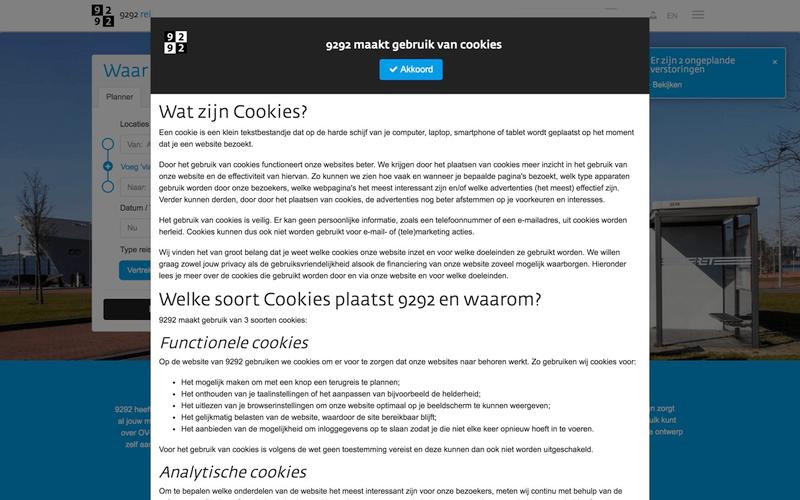By 2023, it is estimated that more than $300 billion will be spent on online advertising worldwide. The vast majority of these advertisements will ultimately direct visitors to a website or webshop. Subsequently, those websites have an average conversion rate of only about 2%.
Why optimize a website?
The consequence of such a low conversion rate is that the vast majority of clicked advertisements will not lead to a conversion (transaction, lead, donation, etc.). The return on advertising can therefore be significantly increased by optimizing the website. These optimizations will then lead to an improved conversion rate and therefore the conversion will increase. Ultimately, these changes will lead to an increase in turnover.
How to optimize a website
The ways to optimize a website fall roughly into three categories:
- Adjustments that improve the user experience
- Adjustments that increase the motivation to buy
- Adjustments that encourage the user to take action
The above points are roughly based on the Fogg Behavior Model. Within the context of this article, the second point includes matters such as the copy used to promote the product or service. Persuasion techniques such as stating how often this product has been sold in the past month also increase the motivation to buy. The third point then includes adjustments such as showing a pop-up with the option to easily sign up for the newsletter. The rest of this article focuses mainly on the first point by looking at customizations that improve the user experience.
Relevant aspects in 2023
The paragraphs below will highlight various aspects that will impact user experience in 2023. What is striking is that this set of aspects has actually been constant for years. While there are shifts in the relative importance given to some aspects over a given period, the set itself typically changes little (even after a crisis of the magnitude of COVID-19).
Page speed
The most striking new development for 2023 in this area of loading speed is without a doubt Core Web Vitals from Google. This is an initiative by Google to provide uniform guidance for quality signals that are essential for a great user experience on the Internet. In practice, this means that Google will take the perceived loading speed of websites into account from May 2021 in its assessment of how high a website will be displayed in the search results. For website developers, this means that they will have to increasingly focus on improving loading speed. This no longer concerns loading times as previously returned by tools such as Pingdom and GTMetrix, but increasingly about the real loading time as normal visitors observe on their own computer or mobile device. To see how your website performs in terms of Web Vitals, you can, for example, use the Pagespeed Insights tool.

Code
In terms of front-end code, JavaScript has been the most important programming language for years (GitHub, StackOverflow). In order to properly optimize a website in 2023, it certainly cannot hurt to have knowledge of JavaScript. In addition to 'vanilla' JavaScript, frameworks built on top of JavaScript are also increasingly emerging. Nowadays, large parts of websites are built dynamically with frameworks such as React, Vue, and Angular. The result of this in previous years was that these frameworks sometimes brought more harm than good in the field of website optimization. For example, in some cases they cause significant delays in loading times, and make things like SEO and A/B testing considerably more challenging. The result of this is that so-called hybrid frameworks such as Next.js are now emerging. They offer the best of both worlds: an optimal way for developers to quickly develop websites, but at the same time also a static website (which makes the aforementioned problems surrounding SEO and A/B testing a thing of the past). If you are interested in delving further into JavaScript, this interactive course on CodeCademy is definitely recommended.
Free and non-binding 1 hour session?
Gain insight into your challenges surrounding CRO
Accessibility
From September 23, 2020, Dutch government agencies are obliged to adhere to stricter accessibility guidelines. From June 23, 2021, this will also apply to mobile applications from government agencies. In practice, this means that the WCAG 2.1 guidelines must be met. The guidelines include accessibility improvements for things like images, animations, forms, navigation, and appearance. What strikes me is that because of this step from the government, more and more commercial parties are now starting to seriously take accessibility into account. Although there is still a long way to go in this area, this is certainly a good step forward. If you are curious about what accessibility improvements can be found on your site, use the WAVE Web Accessibility Evaluation Tool, for example.

Privacy
In recent years, privacy online has increasingly become a hot topic. Of course, we first had the cookie law, which resulted in a proliferation of cookie walls. Social media platforms such as Facebook (article) and TikTok (article) also received a lot of criticism for their privacy policies. More relevant in the context of website optimization, however, are the privacy-related changes that browsers are making. In the meantime, Safari introduced the concept of Intelligent Tracking Protection (ITP) years ago. Shortly afterwards, other browsers followed, such as Firefox with ETP. Google Chrome was silent for a long time after the introduction of ITP, but they have also indicated that they will stop using cookies sometime in 2023. All these changes can have negative consequences for the possibilities to optimize websites, for example blocking things like Google Analytics or A/B test scripts. The exact impact this will have will become clear in the coming years.
Mobile
It has been several years since Google started with mobile-first indexing. The plan was to switch to these indexing methods for all sites in September 2020, but ultimately it was decided to postpone this until the end of March 2021. However, the fact that Google is increasingly focusing on mobile devices would not even should be the primary reason for doing this. For example, there has been a trend for years where mobile devices are gaining ground over desktop devices. This trend will also be visible in the statistics of your website. In fact, this makes the message simple: a mobile website that is at least as good as the desktop website is no longer optional, but is increasingly becoming a requirement for companies.

Security
Working from home is another trend that has of course been going on for years, but has received a huge boost due to COVID-19. Many problems surrounding the security of digital systems are currently related to this. An example of this are system administration tools that are present on employee computers and can be used by malicious parties in an attack on a company. Research also shows, for example, that critical systems are often not sufficiently monitored for threats. Attacks related to the Internet of Things (IoT) are also on the rise. Then of course there are security problems specifically surrounding websites. Surprisingly, the most common problems in this area hardly change over the years. For more information about this, you can contact OWASP and find a list of best practices in the field of website security here.
Tools
For several years now, a sort of fixed set of tools has been developing around optimizing websites. For example, Google Analytics and Hotjar form a basis for many companies to collect data about their visitors. In addition, tools such as Google Optimize are then used to carry out A/B tests. In the past, tools such as VWO and Optimizely also had significant market shares in this area, but this seems to be changing more and more. Interesting developments in the field of website optimization tools, however, are newcomer Microsoft Clarity (which has features similar to Hotjar) and of course Google Analytics 4. The latter may still have a somewhat limited set of options, which in my opinion does not yet constitute a full-fledged replacement. for Universal Analytics, but this will certainly change over the years.
Conclusion
Optimizing a website offers many opportunities. This can ensure higher visitor numbers, but also an improved conversion rate. In this way, (well-executed) website optimization will probably quickly pay for itself. This article looked at what optimizing a website in 2023 looks like, with a focus on matters related to the user experience.





